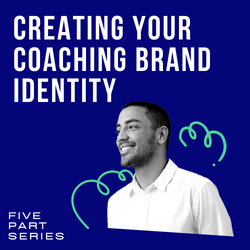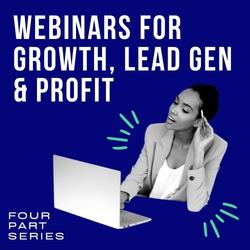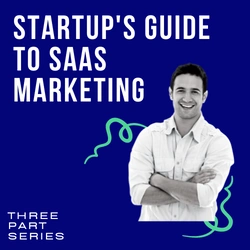Do Popups Still Work Or Will They Hurt Your Digital Marketing And Best Practices For Higher Conversions
If you could boost your opt-ins by 30% or more… would you do it?
These sleekly-designed pop-up windows are one of the most powerful tools in our lead generation toolbox, and you can build them into almost any web page. But do they still work, or are they actually hurting your digital marketing efforts?
The reason you still see popups is that they work, and they work very well. In truth, businesses and entrepreneurs would stop using them if they weren’t converting.
Recently Google changed their algorithm, in which they stated, “If you use popups that are too intrusive, especially on mobile devices, you’re going to lose search traffic.” I took that quote directly from the Google Dev Forum.
There’s an easy way around this. Don’t show popups right when someone comes to your site.
Give them a bit of time – at least 20 to 30 seconds, and right before they go to leave to show them a popup.
The pop-up a customer sees as they go to leave your site is known as an exit intent popup. It’s your last-ditch effort (so make it a good one) to get that visitor to give you their name and email, or even to buy something.
Pop-ups aren’t just for marketing and newsletter sign-ups. Here’s a few other ways these handy devices are used that most people don’t think of as a pop-up:
- Virtual employee for customer service.
- Chatbot for employee-free 24/7 instant answers.
- Style concierge for recommendations and sizing help.
- Automatically push one-time-only clearance item in place of higher priced item when the customer exits the product page.
- Social media promotions using referrer source specific pop-ups.
- Enticing content upgrades.

Best Pop-Up Practices To Optimize Results
We all want to optimize engagement with our site visitors, but how can you ensure your pop-ups are performing at their full potential. The following best practices for using pop-ups have been tested, split-tested and proven on hundreds of sites. Follow these practices to fully optimize your engagement and increase lead generation.
Relevancy Is Everything
The first rule of responsible popup mastery is to make them as relevant as possible. As with any form of digital marketing relevancy is everything – you want to create highly targeted pop-ups that will entice and push engagement.
For instance, there’s no point in showing a popup asking people to sign up to your newsletter if they’re already subscribers. That’s just going to annoy your loyal subscribers.
Instead, you can show them a popup that guides them to your most popular items or exclusive “subscriber-only” page of clearance items. Those will be more relevant to them.
Another way to make it relevant is to use source-specific popups.
Source-specific popups mean that you can target specific visitors based on the source or referrer to your website.
As an example, since 53% of Facebook users have stated that the social media platform influences their purchase decisions, why not create a pop-up to tap into that. If you were to run a marketing campaign in the form of a challenge on Facebook with a source-specific popup set up so when a follower clicks the link from Facebook to your website, they are shown a Facebook specific pop-up. Perhaps you offer a Facebook challenge promotional offer.
Nearly all marketing platforms including Facebook and Google support UTM parameters. This allows you to add a single UTM parameter to your link that tells your pop-up solution what site the visitor is coming from and automatically selects the appropriate interaction. In this example, that interaction would be your Facebook challenge pop-up.
Relevant popups are also a great way to promote new products by redirecting visitors to a certain product page. You may feature a slide-in promotional pop-up that announces an exciting product launch. When your visit clicks the CTA button, they are redirected to the brand-new product page. This type of slide-in promotional pop-up is highly effective when used sparingly to highlight the new and the exciting you have to offer. As with most things in life, if you use them too often, they lose all meaning and will begin to annoy your visitors.
Think About How Your Customer Uses and Experiences Your Site
The second rule of an effective pop-up strategy is to force yourself to experience your website as a new user may. Log out of your WordPress Admin and go to your website on your desktop, tablet, and mobile phone. It should load quickly on all three devices, and your site should be responsive and beautiful on each.
Related: Before You Jump On The Mobile Bandwagon, Know The 5 Biggest Pitfalls You Must Avoid
Ask yourself the following questions for each individual device (desktop, tablet and phone):
- Does the pop-up cover the entire page (huge problem for your user and your Google user experience ranking)?
- Is the pop-up relevant and does it add value to your site experience?
- Does the pop-up present an enticing offer, discount, or educational opportunity?
- Did the pop-up appear within the first 20 seconds of the page loading? If so, fix that right away.
- Do I have an exit-intent popup that drives me to sign up or download or purchase?
Remember, any pop-up you use must add value to the overall user experience of your website. Without that added value your site visitors will become annoyed, and your bounce rate will increase which will lead to lower search rankings.
Make Sure Your Pop-Ups Are Mobile Friendly
Mobile users expect a flawless user experience that makes it easy for them to complete a purchase. Almost just as importantly, Google is now punishing sites that use full screen popups. So, if you have a pop-up that covers or blocks the entire screen on any device, Google will lower your site rankings due to the poor user experience of your website.
To be optimized for mobile screens, popups must be smaller than the screen size, fast, load at least 20 seconds after the page is fully displayed and be easy to close.
Exit Intent Popups Are Safe And Convert Better Than Any Other
Exit intent popups work better than any other by as much as 300%.
Why? Last ditch effort with a compelling offer.
Now, if you’re going to create a popup, don’t just create something that says, “Subscribe to my newsletter,” or, “Buy now.” You must do something that gives value.
Someone’s leaving your website because they didn’t get what they’re looking for. So, if you don’t give them something that’s valuable, you’re not going to get them to convert. Think about what your visitors want, that you’re not providing, and consider providing that in the exit popup, and you’ll increase sales.
Pop-Ups Don't Guarantee Conversions, Great Content Does
Every website owner and business wants to generate tons of traffic to their website, but if that traffic doesn’t convert, it’s worth nothing.
You need to make your visitors engage with your content to prove the value of your brand and service or product offering.
Of course, it isn’t possible to turn every visitor into a customer, but you could turn more visitors into subscribers. That gives you time and opportunity to convert them into paying customers down the road.
To convince a person to hand over their email address to you, you must prove your worth, usually through a lead magnet. You have to offer something of value in return. And the more relevant and valuable your offer, the higher the chances of converting them to subscribers.
Proven Lead Magnets
- Action Guide
- Case study
- Checklist
- Content Upgrade
- How-To Guide
- Workbook
To learn more about lead magnets, read, Save Time By Cleverly Using Existing Content For Your Next Powerful Lead Magnet.
Content upgrades are not just long blog posts. In fact, some of our highest performing ecommerce stores have begun using them with great success.
Let’s say you operate an e-commerce store that sells eco-friendly tableware and kitchen supplies. High quality and expensive. Your content upgrade may be a delicious recipe that can be easily made with the products you sell. You may even include a quick private YouTube video showing just how to make this drool-worthy recipe using your product line.
Content upgrades work very well because they’re highly relevant and targeted. As the site visitor is looking to purchase high-end kitchen supplies, we can safely assume the individual cooks and most likely enjoys it. So safe bet that the same person would like a custom-made recipe with accompanying video that just happens to show off the kitchenware you’re selling.
Let’s Review
Popups work great, and they will help you build your email marketing list with fresh subscribers. The catch is that you can’t show them as soon as someone visits your website. Wait at least 20 seconds before displaying a popup and make sure it’s highly relevant. That pop-up will only annoy your site visitor if it doesn’t provide real value either through information or an amazing offer, discount or promotion. Make it worth their time and email address to engage.
Most importantly, always use an exit intent popup when a site visitor goes to leave your website. You have nothing to lose, and Google doesn’t count them against you at all. That exit pop-up is your last chance to capture the would-be customer, so use it wisely and make them an offer they can’t refuse.

It’s the sales page where the magic happens. This is the page that gives you a return on your marketing investment. It is on this page where we convert visitors to paying customers. Do you know the valuable elements of a high-converting sales page? You will soon. Keep Learning >

Content marketing is the backbone of the biggest success stories over the last decade. I’m referring to companies like Zomato, Canva, ThinkGeek, HootSuite and even Blendtec. It’s not surprising that so many brands are focusing on content marketing, given the average ROI is twice any other type of digital marketing. Keep Learning >



